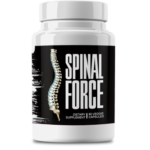This Village-Made Chinese Pain Reliever Eliminates Back And Joint Pain!
The Surprising Link Between Posture and Pain Above Knee Cap

The Surprising Link Between Your Posture and That Nagging Pain Above Your Knee
Ever notice a persistent ache just above your kneecap that won't quit? While it's easy to blame workouts or old injuries, your everyday posture might be the sneaky culprit behind your discomfort. The way you sit, stand, and move creates a ripple effect throughout your body - and your knees often pay the price. Let's dive into this unexpected connection and give you real solutions to finally find relief.
What's Really Causing That Pain Above Your Kneecap?
That tender spot above your knee can protest in different ways depending on what you're doing. Maybe it's:
- A dull, annoying ache that shows up during Netflix binges
- Sharp zingers when you tackle stairs or squats
- Noticeable tenderness when you press the area
- Morning stiffness that makes you walk like a robot
The Usual Suspects Behind Knee Pain
Several common issues could be at play:
- Quadriceps tendinitis: When the tendon connecting your thigh muscles gets angry and inflamed
- Runner's knee: Your kneecap isn't gliding smoothly in its track
- Bursitis: Those little fluid-filled cushions getting irritated
- Muscle imbalances: Some muscles working overtime while others slack off
Your Posture's Secret Role
Here's the eye-opener: that slumped posture at your desk or the way you stand could be setting off a chain reaction. When your pelvis tips forward (something we all do after hours of sitting), it puts extra stress on your quads and kneecaps - hello, persistent pain!
How Your Body's Alignment Affects Your Knees
Your body's like a complex mobile - tug one part out of place, and everything else compensates.
The Pelvic Tilt Problem
That forward tilt many of us develop from sitting too much causes:
- Tight hip flexors that yank on your pelvis
- Overworked thigh muscles doing jobs your glutes should handle
- Extra pressure on your kneecap with every step
Why Slouching is a Knee Killer
When you hunch:
- Your weight shifts forward unnaturally
- Your knees end up bearing more load than they signed up for
- Your natural shock absorbers stop working properly
Standing vs. Sitting: Both Can Cause Issues
Neither position is innocent when it comes to knee stress:
- Standing: Locking your knees puts them in hyperdrive
- Sitting: Crossing legs or uneven weight distribution creates imbalances
Muscle Imbalances: The Hidden Culprits
Your muscles should work as balanced teams. When some members get lazy and others overcompensate, your knees suffer the consequences.
When Muscles Get Too Tight
All that sitting leaves your hip flexors and quads shortened, which:
- Drags your pelvis out of position
- Puts constant tension on your kneecap's tendon
- Makes your kneecap rub the wrong way
The Weak Link: Glutes and Hamstrings
When your backside muscles don't pull their weight, your quads end up:
- Smashing your kneecap into place
- Failing to absorb impact properly
- Creating awkward movement patterns
When Should You Worry About Knee Pain?
While many cases improve with simple fixes, some signs mean it's time to call the pros.
Red Flags Not to Ignore
Get checked ASAP if you notice:
- Major swelling or redness
- Can't put weight on it
- Knee locking or catching
- Pain sticking around more than two weeks
Simple Fixes to Try at Home
These targeted moves can help rebalance your muscles and take pressure off your knees.
Essential Stretches
Try these daily to loosen tight areas:
- Kneeling hip opener (life-changing for desk workers)
- Standing quad stretch (hold onto something for balance)
- Foam rolling (hurts so good on tight thighs)
Strength Builders
Focus on waking up sleepy muscles with:
- Glute bridges (squeeze at the top!)
- Clamshells (small movements, big results)
- Deadlifts (go light and focus on form)
Small Changes, Big Relief
Tweak your daily habits to protect your knees long-term:
Posture Perks
- Try a lumbar pillow in your office chair
- Set phone reminders to stand and stretch
- Sleep with a pillow between your knees
When to Call in the Professionals
If DIY fixes aren't cutting it, consider:
Physical Therapy Benefits
A good PT can:
- Create a personalized recovery plan
- Use hands-on techniques for relief
- Retrain how you walk and move
Wrapping Up
Solving knee pain often means looking beyond the knee itself. By improving your posture, balancing your muscles, and moving smarter, you can say goodbye to that nagging pain above your kneecap.
Start with simple stretches today, and don't hesitate to seek help if needed. Your future self will thank you every time you climb stairs pain-free!
Struggled with posture-related knee pain? Share what worked (or didn't) for you below - your experience could help others!








